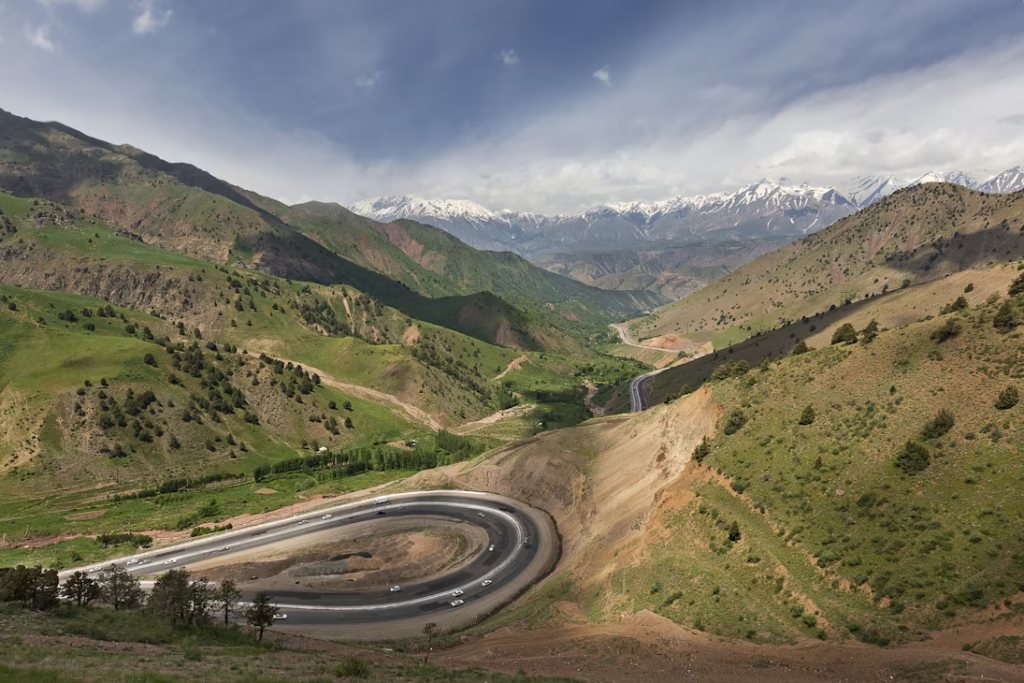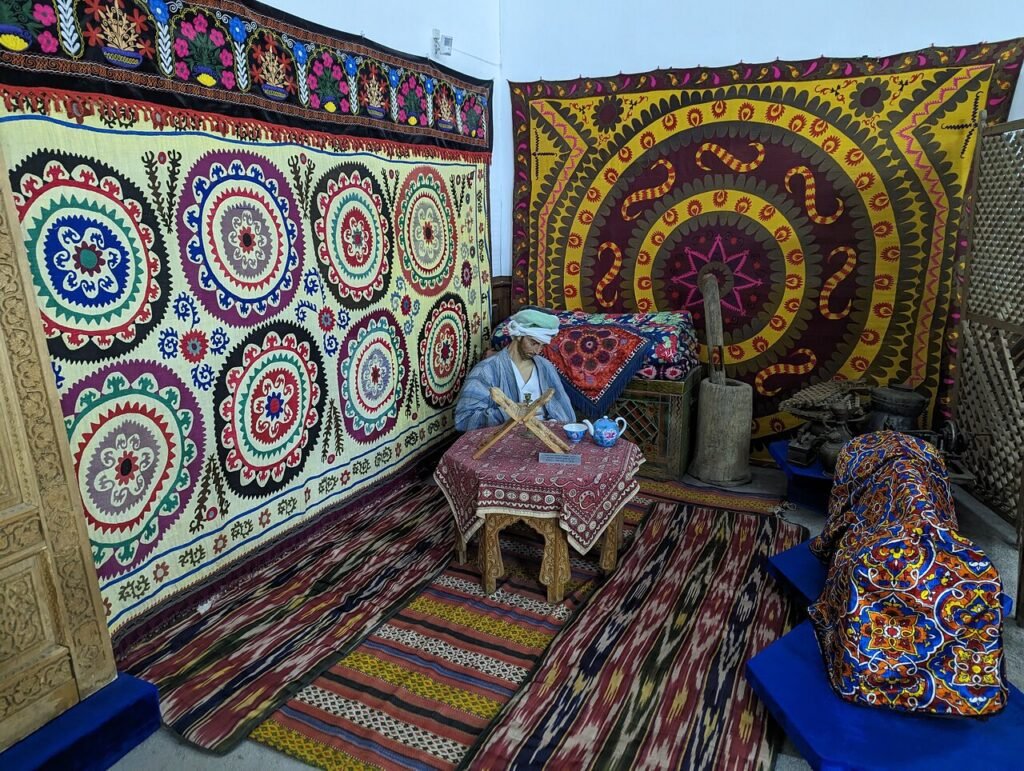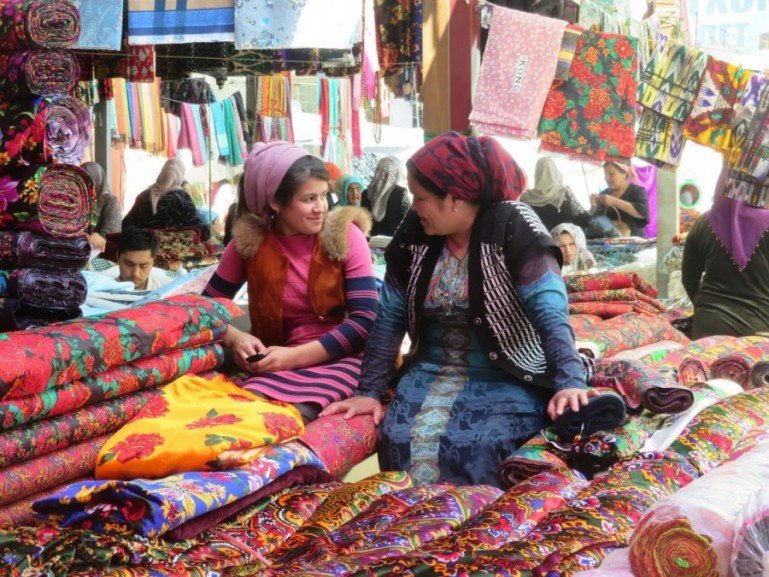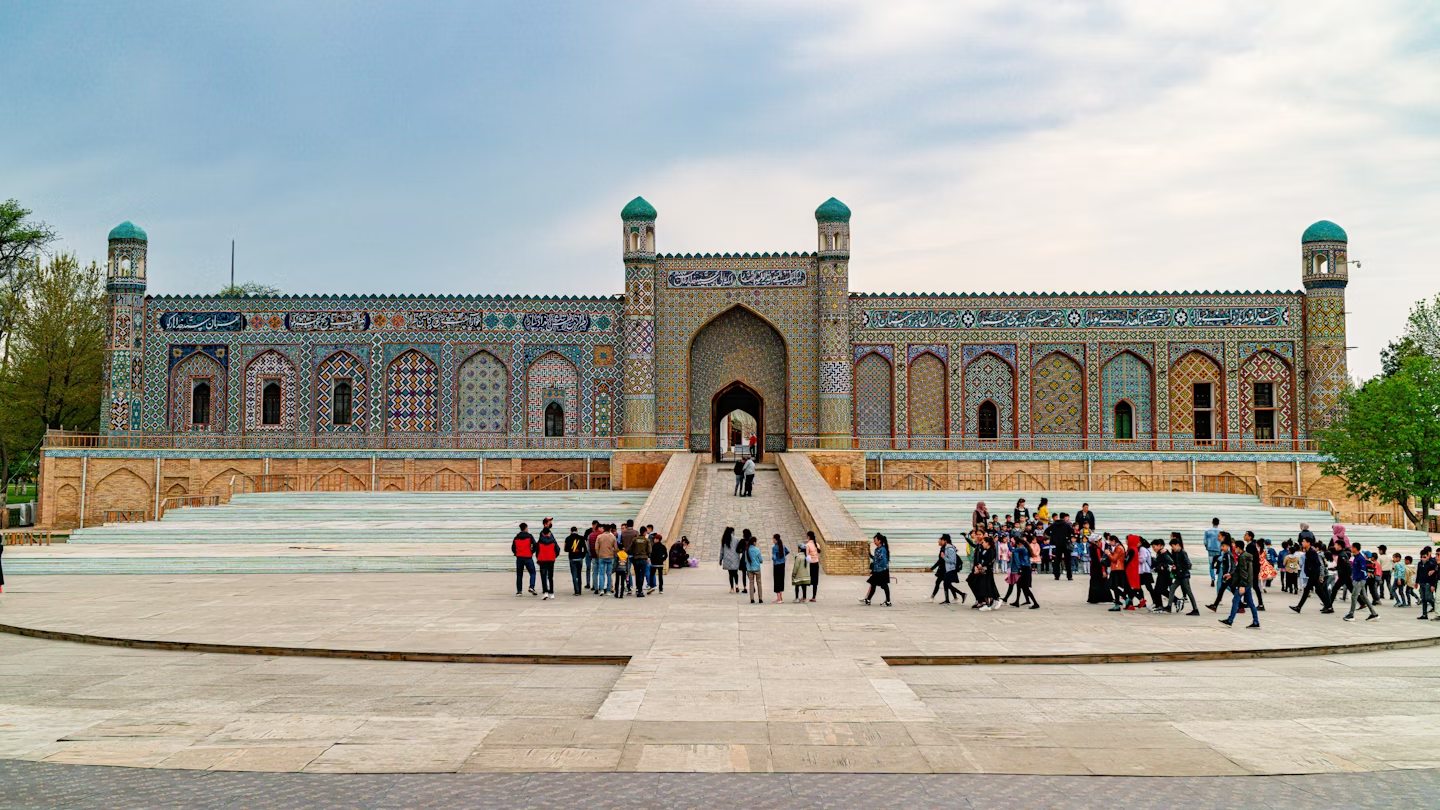Uzbekistan is rapidly developing its tourism sector, but Fergana Valley tourism remains its cultural heart. This fertile and historic region, surrounded by mountains, offers an authentic Silk Road experience often missed by travelers.

Fergana Valley
It is dawn in Tashkent when the old Soviet train pulls into the station. My journey to the eastern city of Margilan — gateway to the Fergana Valley — begins. Surprisingly, this train is empty of foreign visitors. I sit beside an Uzbek family. The matriarch, Gulnora, wears a beautiful ikat-patterned headscarf. When I say “Ajoyib!” — Uzbek for “great” — she smiles and tells me it was made in the valley.
The day before, I visited Tashkent’s historic Chorsu Bazaar and tasted sweet strawberries grown in Fergana. Now, on the train, I offer my last strawberries to the family. Gulnora responds with her own feast — mulberries, apricots, apples, and oranges, all from the valley.
Fergana Valley: Heart of Uzbek Culture
The Fergana Valley lies across Uzbekistan, Kyrgyzstan, and Tajikistan. It is cradled between the Tien Shan and Alay mountains. The valley’s fertile soil, fed by the Naryn and Kara Darya rivers, has sustained agriculture and culture for centuries. It is also home to Uzbekistan’s three cultural treasures — silk weaving, ceramics, and fruit.
Once a thriving hub on the Silk Road, the Fergana Valley connected China, Persia, and the Mediterranean. While cities like Samarkand and Bukhara are tourist hotspots, this valley offers a more genuine cultural experience.
Ikat Weaving in Margilan
Margilan is the birthplace of Uzbekistan’s famous ikat weaving. Locally known as abrbandi, this technique dates back over 1,000 years. Ikat fabrics — adras, atlas, and baghmal — are still woven by hand here, unlike mass-produced textiles elsewhere.

At Yodgorlik, Margilan’s oldest silk factory, silkworms munch on mulberry leaves until they spin delicate cocoons. “We only use cocoons that the larvae leave behind,” says director Luiza Kamolova. “If we harm the larvae, we harm the future of our silk industry.”
The process is complex. Artisans wash and bundle the silk threads, then dye them with natural pigments. Onion skins produce yellow, indigo leaves create blue, and pomegranate skins give brown tones. These vibrant fabrics are worn across Uzbekistan — in traditional and modern styles.
Rishtan’s World-Famous Ceramics
Rishtan, another gem of the valley, is known for its stunning ceramics. A giant ceramic pitcher greets visitors at the city entrance. At Koron, a well-known showroom, I wander among colorful pottery — bowls, jugs, and tiles in rich blue glazes.

“Pomegranates bring good fortune,” says Ravshan Tojiddinov, Koron’s founder. “We paint them on ceramics, gift them at weddings, and enjoy them as a reminder that life is both sweet and sharp.”
In Rustam Usmanov’s workshop, students craft pottery using Rishtan’s natural clay. Each piece is shaped, dried, coated, and hand-painted with traditional motifs. The second firing locks in the turquoise glaze that defines Uzbek pottery.
Fergana’s Fruitful Landscapes
The Fergana Valley tourism experience would not be complete without tasting its fruits. Grapevines, cherries, and apricots grow everywhere. At Fergana city’s market, rows of peaches, apples, and fragrant strawberries line the stalls. “Everything here was picked this morning,” says one vendor. “We grow for our families first, then for the market.”

The valley’s rich soil and sunny climate make its fruit some of the best in Central Asia.
Why Fergana Valley Tourism is Worth It
The Fergana Valley is not about staged tourist attractions. Ikat textiles, ceramics, and fruit are part of daily life. At a small stall near Margilan station, an elderly woman sells fresh mulberries in hand-painted bowls. This moment captures the valley’s beauty — a living culture untouched by mass tourism.
For travelers seeking authentic Uzbekistan, the Fergana Valley is a must-visit destination.




